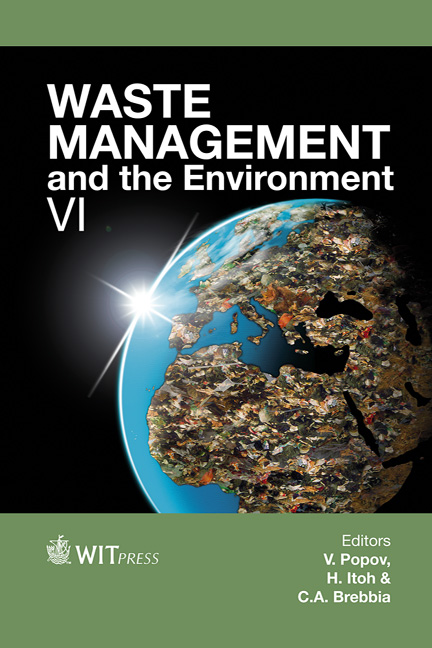The Use Of Mixed Effluent Liquid Wastes As A Source Of Valuable Nutrients
Price
Free (open access)
Transaction
Volume
163
Pages
8
Page Range
335 - 342
Published
2012
Size
378 kb
Paper DOI
10.2495/WM120301
Copyright
WIT Press
Author(s)
M. P. Zacharof & R. W. Lovitt
Abstract
The recovery of valuable nutrients, from waste sources allows carbon based materials to be recycled and reused through the production of organic materials. For example, phosphate and ammonia can be directly applied in a wide range of fields in today’s industrial world including their use in the fertilizers production industry, textiles, cosmetics in the food industry. The aim of this research is the ability to recover these sources from waste processes, such as anaerobic digestion and promote these materials in the industry. These neutral processes will provide valuable carbon neutral processes that are highly beneficial for the environment as provide industry with materials and reasonable cost. Keywords: waste process, nutrients, particle size, dry matter, ammonia, phosphate, environment, conductivity, salinity, sludge. 1 Introduction Several studies have shown possible environmental and commercial benefits using mixed stream effluents, deriving from different sources, as a potential source for valuable nutrients. These benefits include the relief of municipal treatment plants, the use of favourable nutrients and the composition of urine free wastewater for biotreatment [1–3]. In anaerobic processes the hydrolysis of target solid wastes followed by the microbial conversion of them to biodegradable organic content results in the production of intermediate organic acids, specifically carboxylic acids. These acids are detected at high concentrations in the effluent streams and mixed liquors of anaerobic membrane reactor systems. Other useful nutrients include phosphate and ammonia [4–6].
Keywords
waste process, nutrients, particle size, dry matter, ammonia, phosphate, environment, conductivity, salinity, sludge.





